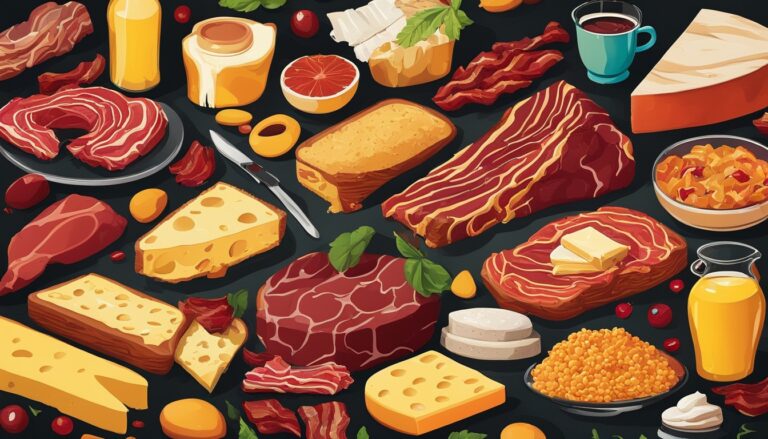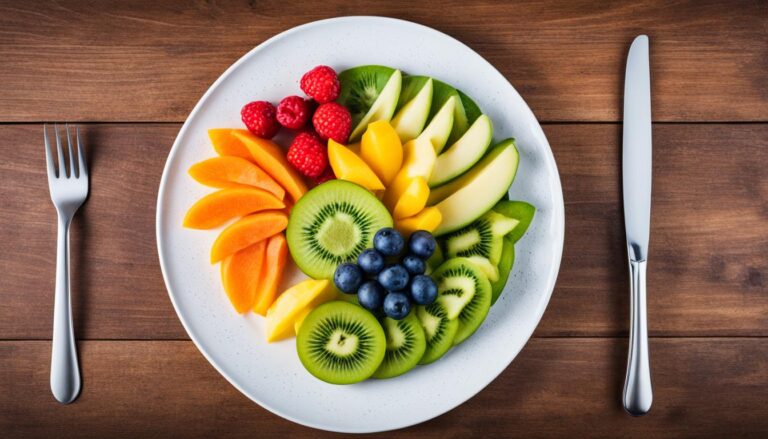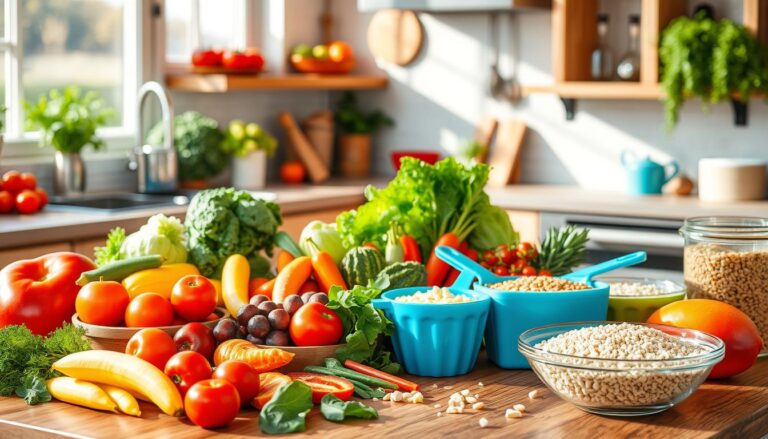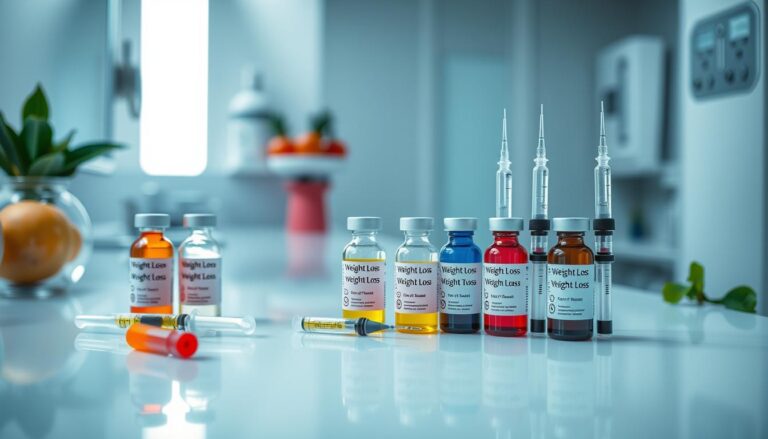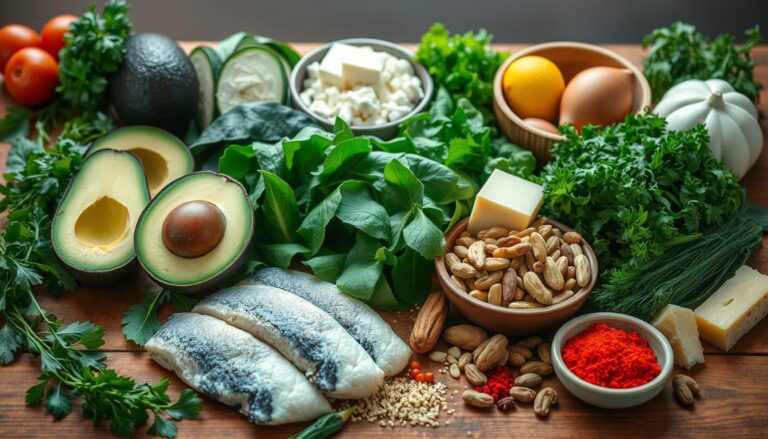Do you often feel tired have anemia or wish to be healthier? Iron might be the key to more energy and better health. This vital mineral helps move oxygen makes energy and does many other important jobs in your body.
This guide will show you how to increase your iron. You’ll learn the best ways to do it with supplements and food that are packed with nutrients. Say goodbye to low iron and hello to feeling full of life!
Key Takeaways
- Iron is a vital mineral that supports oxygen delivery and energy production in the body.
- Deficiency in iron can lead to anemia, causing fatigue, weakness, and other health issues.
- Incorporating iron-rich foods and supplements can help boost your intake and maintain optimal levels.
- Both plant-based and animal-based sources of iron provide unique benefits for your health.
- Certain cooking methods and the presence of vitamin C can enhance iron absorption.
The Importance of Iron for Optimal Health
Iron is key for our health and well-being. It helps carry oxygen in the body and makes energy. This mineral is essential for how our body and mind work.
Iron’s Role in Oxygen Delivery and Energy Production
Iron helps make hemoglobin. Hemoglobin carries oxygen from the lungs to each cell. If we don’t have enough iron, we can get iron deficiency anemia.
Besides oxygen, iron aids in energy production. It helps turn food into energy our body can use. This is crucial for our vitality, as iron turns nutrients into ATP, our energy source.
Consequences of Iron Deficiency Anemia
- Fatigue and weakness
- Impaired cognitive function and concentration
- Increased risk of infections due to a weakened immune system
- Pale skin and brittle nails
- Increased heart rate and shortness of breath
Iron deficiency can cause many problems. It affects our body and mind. Knowing the signs early can help us stay healthy and full of life.
Iron is the key to good health and energy levels. Without it, our bodies simply can’t function at their best.
Iron Supplements A Quick Fix for Deficiency
Iron deficiency can be a real challenge for some people. Luckily, there are supplements that can help quickly and effectively. These products are varied, like ferrous sulfate, ferrous gluconate, and heme iron. Each type comes with different benefits and how well the body can absorb it.
It’s very important to talk to a healthcare professional before starting any iron supplement. They will help you pick the right one and decide how much you should take. This is whether you want to prevent anemia or just add more iron-rich foods to your diet. Getting the right supplement could really help your health.
Iron supplements can be a lifesaver for those dealing with iron deficiency, providing a quick and efficient way to replenish essential stores.
The good thing about iron supplements is they’re convenient and easy to use. You can take them with your food every day. When you add them to a diet full of iron-rich foods, you’re taking a big step towards better health.

Finding the best way to increase your iron levels is personalized. You and your healthcare provider should work together to find what’s best for you. The right choice helps you overcome the difficulties of low iron and feel full of life again.
Harnessing the Power of Iron Rich Foods
Iron supplements are good for a quick fix, but iron-rich foods are a tasty and natural way to increase your levels. It’s important to eat a mix of plant-based and animal-based foods. Each type of iron has its own benefits.
Plant Based Iron Sources: A Nutritious Bounty
Lentils, spinach, and fortified cereals are excellent plant-based sources of iron. They might not boost your levels as quickly as animal products, but they offer many more nutrients.
- Lentils: These versatile legumes are packed with around 3.3 mg of iron per cooked cup, making them a fantastic plant-based iron source.
- Spinach: This leafy green powerhouse contains 6.4 mg of iron per cooked cup, along with a wealth of other essential vitamins and minerals.
- Fortified Cereals: Many breakfast cereals are fortified with iron, providing 18 mg or more per serving a great way to start the day strong.
Animal-Based Iron Sources Heme for Maximum Absorption
Animal products like red meat, chicken, and fish offer heme iron. This type of iron is easier for your body to absorb.
| Food | Iron Content per serving |
|---|---|
| Beef, lean | 2.7 mg 3 oz cooked |
| Chicken, dark meat | 1.1 mg 3 oz cooked |
| Tuna, canned in water | 1.1 mg 3 oz |
It’s good to mix plant and animal sources of iron in your meals. This way, your body gets all the iron it needs for health and energy.
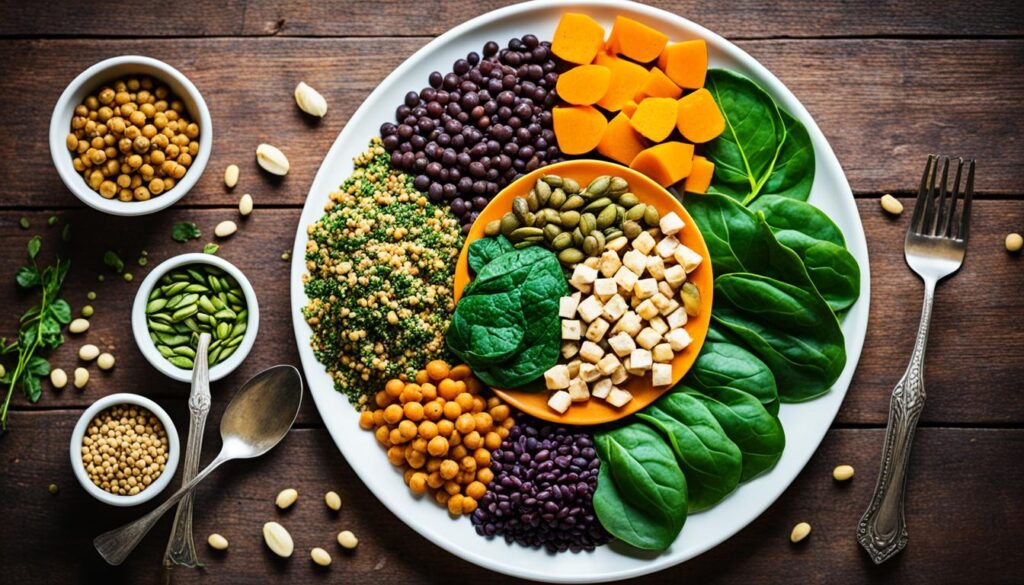
How to get more iron in your diet through supplements and food sources
Keeping enough iron in your diet is key for being healthy. Eating foods high in iron and sometimes taking supplements can help. This way, you can make sure you’re getting enough iron. Let’s look at how you can up your iron game.
Harnessing the Power of Iron Rich Foods
Start by adding lots of iron-rich foods to your meals. Plant-based sources, such as spinach and lentils, give you non heme iron. This kind of iron is harder for your body to absorb. On the other hand, animal-based sources like meats and seafood contain heme iron. Your body can use this type of iron more easily.
- Go for bread, cereal, and pasta that have extra iron added to them.
- Combine iron-rich foods with iron absorption enhancers like fruits rich in vitamin C. Doing this can help your body soak up more iron.
- Stay away from having iron-rich foods with things that block iron absorption. For example, tannins in tea or phytates in whole grains can hinder how much iron you absorb.
Supplementing for Optimal Iron Levels
Sometimes, eating more iron-rich foods is not enough. That’s when taking iron supplements can help. There are different types of supplements, like ferrous sulfate or heme iron. Always talk to a doctor to pick the best supplement for you and to figure out the right amount to take.
| Supplement Type | Absorption Rate | Potential Side Effects |
|---|---|---|
| Ferrous sulfate | Moderate | Gastrointestinal discomfort, constipation |
| Ferrous gluconate | Moderate to high | Relatively lower side effects |
| Heme iron polypeptides | High | Minimal side effects |
Remember, follow the doctor’s advice on iron supplements to stay healthy and get the most out of them.

Combining iron-rich foods with smart supplement use can keep your iron levels up. This helps with your overall health.
Knowing the difference between heme and non-heme iron is important. Also, being aware of how certain things help your body absorb iron can make a big difference. Choosing the right foods and supplements for your iron needs can boost your energy, help carry oxygen better, and support a healthy immune system.
Cooking Methods that Boost Iron Absorption
Cooking right can boost the amount of iron your body absorbs. The way you prepare your food affects how much iron you get from it. Some cooking methods help keep the iron in your food and make it easier for your body to take in.
The Role of Vitamin C in Enhancing Iron Uptake
Pairing iron-rich foods with vitamin C can really help. Vitamin C changes the type of iron in plant-based foods. It does this to a form that your body uses better.
Add lemon juice to your stir-fry. Or have a salad with your meal. The vitamin C from the lemon or the salad greens can make your body absorb up to three times more iron. This way, you get the most nutrition out of what you eat.
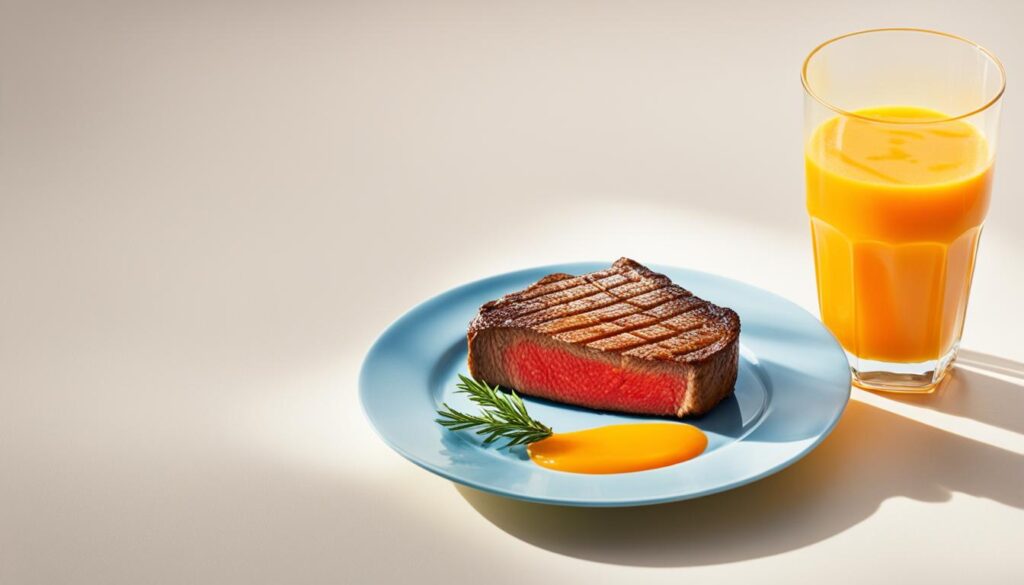
Steaming or sautéing can keep more iron in your meals. This way, your body can take in the iron from the food more easily.
- Steaming your food keeps its nutrients, like iron, well. It helps protect the vitamins and minerals in your meal.
- Sautéing with a healthy oil also helps. The oil helps your body absorb the plant-based iron better.
Using these cooking methods for iron absorption and combining iron-rich foods with vitamin C for iron absorption helps. It makes sure your body absorbs iron well. This way, you get the nutrition you need to be healthy.
Iron Fortification A Convenient Way to Get Your Fill
Finding the right amount of iron can be tough. But, iron-fortified foods make it easier. Everyday foods now come packed with this vital mineral. It’s great news for those needing more iron or who don’t eat meat.
Adding iron to foods helps tackle a big problem – not enough iron in diets. The World Health Organization warns 1.6 billion people have anemia from low iron. By eating iron-fortified foods daily, you boost your iron levels with no hassle.
Finding iron fortified foods is simple and they’re in nearly every store. With choices like breakfast cereals, pastas, and breads out there, you’re sure to find your favorites. They fit all kinds of diets and tastes.
| Product | Iron Content | Percent of Daily Requirement |
|---|---|---|
| Fortified Breakfast Cereal 1 cup | 18 mg | 100% |
| Enriched White Bread 1 slice | 2 mg | 11% |
| Fortified Pasta Sauce 1 cup | 6 mg | 33% |
Want to keep your iron levels up or fix a shortage? Adding iron-fortified foods is simple and works well. Just swap in these foods in your daily eating. This way, you ensure your body gets the iron it needs.
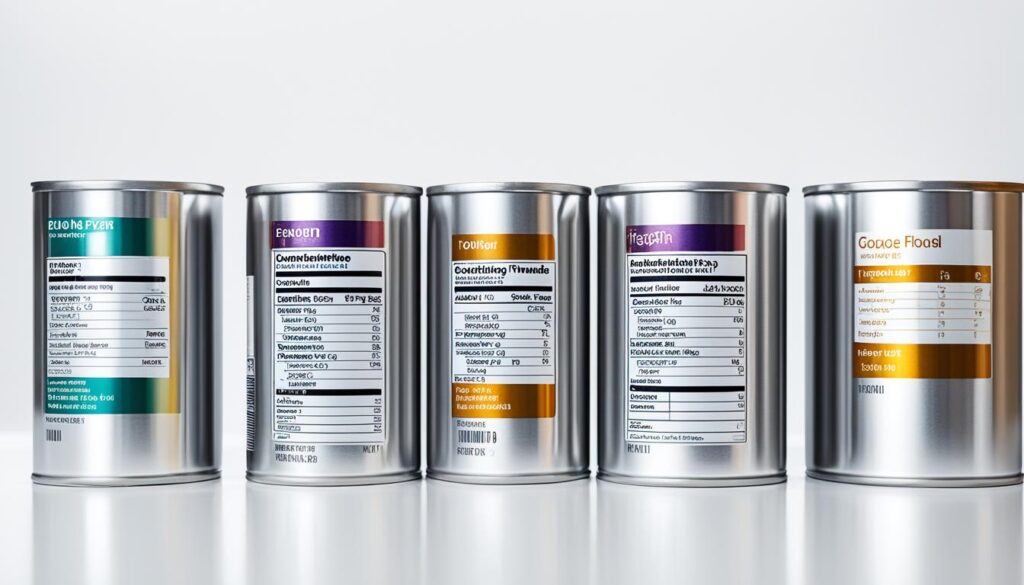
Iron fortification is a cost-effective and sustainable approach to address iron deficiency, providing a reliable source of this essential nutrient to populations in need.
Tailoring Your Iron Intake to Your Needs
Iron is key for our body, but how much we need depends on our age, if we’re male or female, and what stage of life we’re in. Knowing your own iron needs is important for good health and to avoid shortages.
Iron Requirements by Age and Gender
The amount of iron you should eat changes a lot. It’s based on your age and whether you’re a boy or a girl. Below is a general guide for the iron you need, grouped by age and gender.
| Age and Gender | Recommended Daily Iron Intake mg |
|---|---|
| Children 7-12 months | 11 |
| Children 1-3 years | 7 |
| Children 4-8 years | 10 |
| Males 9-13 years | 8 |
| Females 9-13 years | 8 |
| Males 14-18 years | 11 |
| Females 14-18 years | 15 |
| Adult Males 19-50 years | 8 |
| Adult Females 19-50 years | 18 |
| Adults 51+ years | 8 |
| Pregnant Women | 27 |
| Breastfeeding Women | 9 |
These numbers are a great starting point, but your actual needs might differ. Things like health issues, how active you are, and what you normally eat play a role. A talk with a doctor or a nutritionist can help you figure out the best dietary iron plan for you.
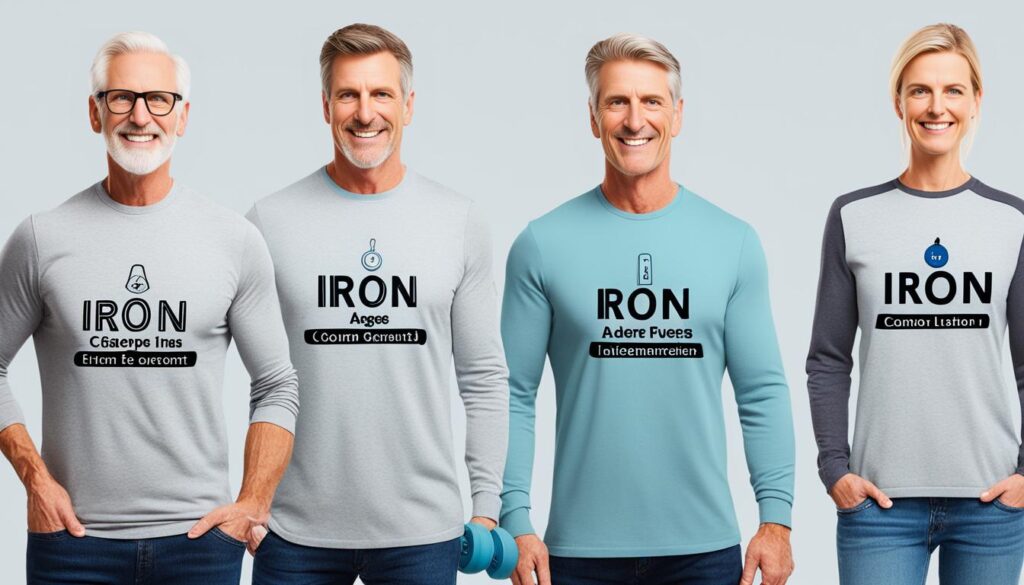
Achieving the right balance of iron intake is essential for maintaining overall health and well-being.
Signs and Symptoms of Iron Deficiency
It’s vital to know the signs of iron deficiency for quick treatment. This condition is the top nutritional issue globally. Recognizing these symptoms early can help prevent anemia and keep you healthy.
Feeling tired and weak all the time is a big sign. Without enough hemoglobin, which carries oxygen, you have less energy. You might also get out of breath easily, even with light activity.
A pale look is another key symptom. With fewer red blood cells, skin may look pale, and lips and nails may lose color. Hair might also thin or fall out, especially in women, due to nutrient shortages.
Iron deficiency can also hurt your thinking. Your brain doesn’t get enough oxygen, affecting concentration and memory. Kids may have more trouble learning without plenty of iron for their brains.
Knowing these signs can lead to early action. Adding iron-rich foods or supplements to your diet can rebalance your iron levels. This avoids the bad outcomes of anemia.
Striking the Right Balance Too Much of a Good Thing
The saying too much of a good thing fits well with iron intake. Essential for health, too little or too much iron causes problems. It’s important to know the proper amounts to stay healthy.
Too much iron can be harmful, causing a condition called hemochromatosis. This can lead to serious health issues like organ damage. Some people are more at risk due to how their body processes iron.
- Gastrointestinal problems: Excessive iron supplements can mean constipation, nausea, and stomach pain.
- Organ damage: Too much iron in your body can hurt your liver, heart, and other vital organs.
- Increased disease risk: Having too much iron is linked with a higher risk of diseases like type 2 diabetes and heart disease.
Balance is key, following advised iron intake guidelines for your age and situation. A doctor or nutritionist can help tailor the right amount for you. This minimizes the risk of overdoing it.
| Recommended Daily Iron Intake | Age Group |
|---|---|
| 8 mg | Men 19 years and older |
| 18 mg | Women 19-50 years |
| 8 mg | Women 51 years and older |
| 27 mg | Pregnant women |
| 11 mg | Breastfeeding women |
Finding the right mix of iron supplements and iron-rich foods is essential. It ensures we get the good without the bad. Keep an eye on your iron intake with advice from experts for a healthy balance.
Conclusion
Iron is a key player in keeping us healthy. To boost your energy, use iron supplements and eat foods rich in iron. This step is vital if you want to avoid anemia or increase your iron intake. It’s all about smart choices in both supplements and food.
Finding ways to include iron in your diet is important. Try to choose from a wide range of iron sources, like plants and animals. And remember, pairing iron-rich foods with vitamin C helps your body absorb the iron better.
By focusing on your iron intake, you can improve your health. You’ll feel stronger and more alive. Remember, achieving good health with iron may be challenging. Yet, with the right approach and dedication, you can get there.
